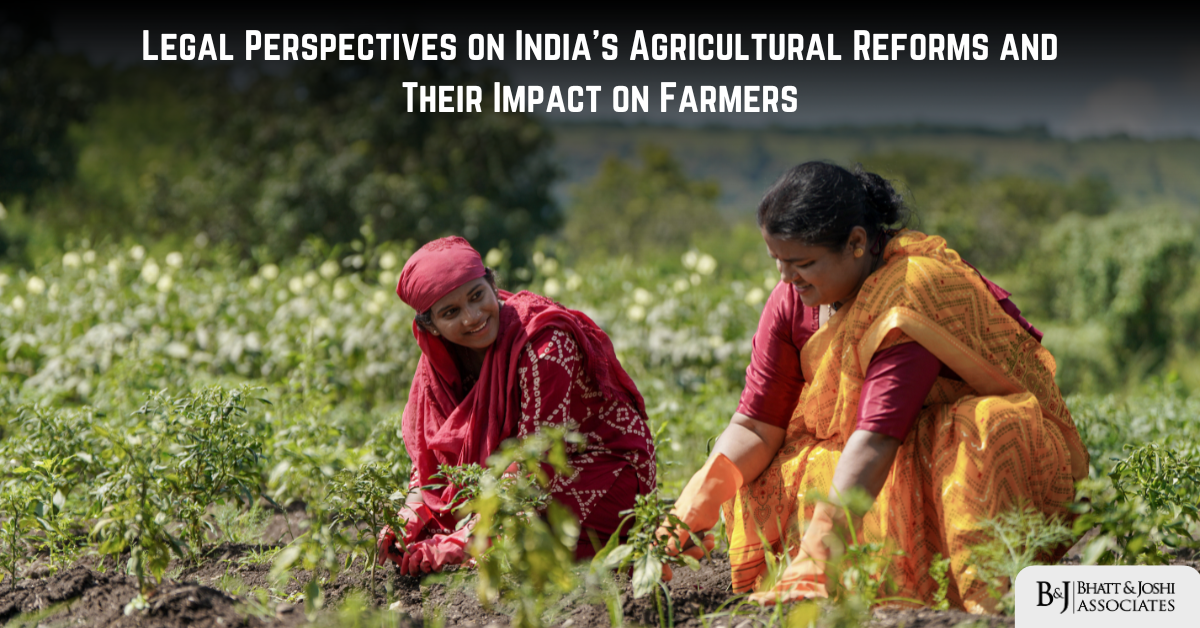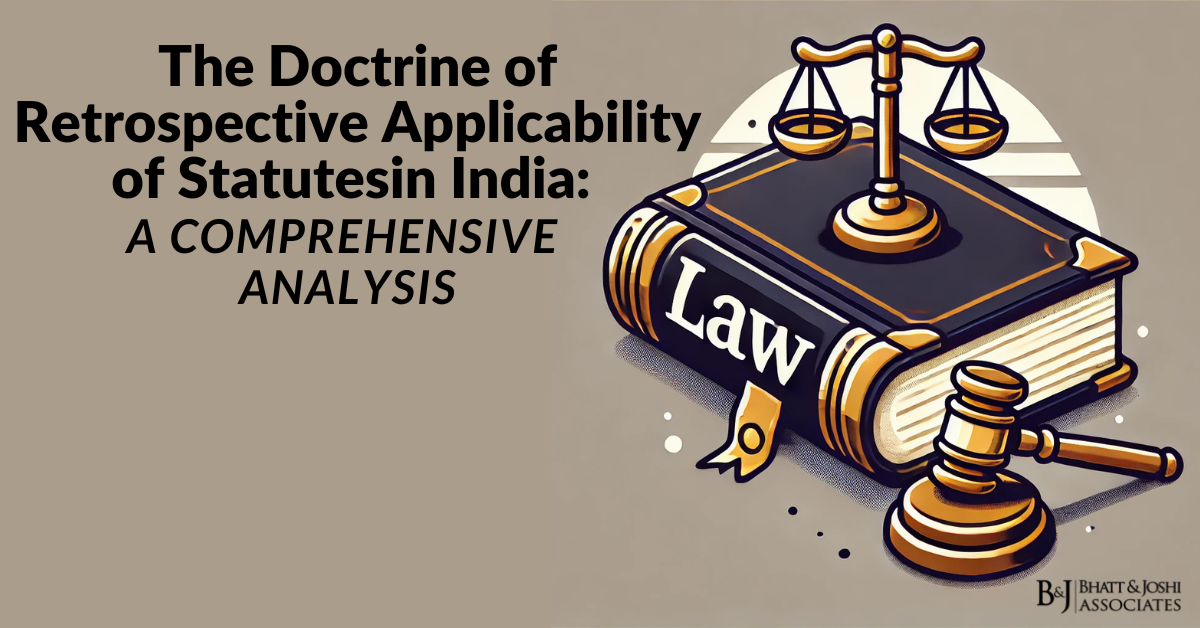Introduction
Agriculture forms the backbone of India’s economy, employing nearly half of the country’s workforce and contributing significantly to its GDP. Despite its pivotal role, the sector has long grappled with structural inefficiencies, fluctuating commodity prices, fragmented markets, and inadequate infrastructure. Recognizing these challenges, the Indian government has over the years initiated several agricultural reforms aimed at enhancing productivity, ensuring farmers’ welfare, and aligning the sector with global market practices. These reforms, while ambitious, have sparked widespread debates about their effectiveness and impact on the agrarian community. They have also brought to light various legal, constitutional, and regulatory challenges that merit critical examination. This article delves into the legal perspectives on India’s agricultural reforms, exploring their regulatory frameworks, constitutional basis, relevant laws, judicial interventions, and implications for farmers, while also examining potential pathways for sustainable agricultural development.
The Genesis and Framework of India’s Agricultural Reforms
India’s agricultural reforms have evolved in response to shifting economic priorities and social imperatives. Post-independence, the Green Revolution marked a turning point by introducing high-yielding crop varieties and modern irrigation techniques. However, while it boosted food security, it also entrenched regional disparities and environmental degradation. More recently, reforms have focused on liberalizing agricultural markets, fostering private investment, and addressing the inefficiencies of the traditional mandi system.
A notable milestone in this trajectory was the introduction of three contentious farm laws in 2020. These were:
- The Farmers’ Produce Trade and Commerce (Promotion and Facilitation) Act, 2020,
- The Farmers (Empowerment and Protection) Agreement on Price Assurance and Farm Services Act, 2020, and
- The Essential Commodities (Amendment) Act, 2020.
These laws sought to transform agricultural marketing by creating alternative trading platforms, promoting contract farming, and deregulating the storage of essential commodities. Proponents argued that the reforms would attract investment, reduce wastage, and enhance market efficiency. However, the laws faced fierce resistance from farmers who feared that deregulation would erode the Minimum Support Price (MSP) mechanism, expose them to corporate exploitation, and weaken state-controlled APMC markets.
The Legal and Constitutional Dimensions of the Agriculture Reforms
Agriculture, as per the Indian Constitution, is a subject under the State List in the Seventh Schedule. This division grants states the authority to legislate on agricultural matters, including markets and land tenure systems. However, the central government enacted the 2020 farm laws by invoking its powers under the Concurrent List, particularly Entry 33, which pertains to trade and commerce in foodstuffs, edible oilseeds, and other essential commodities. This raised significant constitutional questions about the division of powers between the center and the states.
The central government’s justification for these laws rested on its ability to regulate interstate trade and ensure the free flow of goods across state boundaries. Critics argued that this approach encroached upon states’ jurisdiction and undermined the federal structure of governance. States such as Punjab and Haryana, which have a deep reliance on the MSP-backed procurement system, passed their own legislation to counteract the central laws, leading to a legal and political impasse.
Analyzing Key Legislative Provisions of Agricultural Reforms
The Farmers’ Produce Trade and Commerce Act
This Act aimed to create a free market environment by allowing farmers to sell their produce outside APMC-regulated mandis. While the intent was to provide farmers with greater choice and better prices, concerns arose about the lack of oversight in these alternative trade areas. Farmers feared that over time, the dismantling of the mandi system would lead to a loss of the safety net provided by MSP and create a power imbalance in favor of private players.
The Farmers Agreement on Price Assurance Act
This legislation introduced a framework for contract farming, enabling farmers to enter into agreements with agribusinesses and exporters prior to sowing. While the law aimed to insulate farmers from price volatility and ensure predictable incomes, critics pointed to the unequal bargaining power between small farmers and large corporations. The dispute resolution mechanisms outlined in the Act were also criticized for being inaccessible and favoring the more resourceful entities.
The Essential Commodities Amendment Act
This amendment sought to deregulate the storage and movement of key food items, ostensibly to attract investment in cold storage and supply chain infrastructure. While it aimed to address supply-side inefficiencies, there were apprehensions about hoarding, price manipulation, and its potential impact on food security. Farmers expressed concerns that deregulation could lead to volatility in market prices, adversely affecting their incomes.
Judicial Interventions and Landmark Case Laws in Agricultural Reforms
The farm laws sparked a series of legal challenges and public interest litigation, bringing the judiciary into the spotlight. The Supreme Court of India intervened by staying the implementation of the laws in January 2021, citing the need to de-escalate tensions between the government and the protesting farmers. The court also formed a committee to examine the laws and propose a resolution, reflecting its mediatory role in contentious policy disputes.
Judicial precedents have long influenced agricultural law in India. In K.K. Poonacha v. State of Karnataka (2010), the Supreme Court highlighted the importance of equitable resource distribution and safeguarding farmers from exploitation. Similarly, in Swaraj Abhiyan v. Union of India (2016), the court addressed drought relief measures, emphasizing the state’s obligation to protect farmers’ livelihoods. These rulings underscore the judiciary’s commitment to ensuring social justice in agricultural policy.
The Social and Economic Implications of Agricultural Reforms
The legal and regulatory frameworks surrounding India’s agricultural reforms have profound implications for farmers’ livelihoods, market dynamics, and rural economies. While proponents of the 2020 farm laws argued that liberalization would unlock efficiencies and attract investment, opponents warned of adverse effects on small and marginal farmers, who constitute the majority of India’s agricultural workforce.
Small Farmers and Market Vulnerabilities
Small and marginal farmers, owning less than two hectares of land, face significant challenges in accessing competitive markets. They often lack the financial literacy, bargaining power, and infrastructure needed to benefit from deregulated trade. Without strong legal protections, these farmers risk exploitation by middlemen and corporations, exacerbating existing inequities.
Corporate Involvement and Contract Farming
The introduction of contract farming as a legal framework has been hailed as a means to ensure price predictability and reduce market risks for farmers. However, the practical implementation of such arrangements raises concerns about the fairness of contracts and the efficacy of dispute resolution mechanisms. Ensuring transparency and accountability in these contracts is essential to prevent exploitation.
Federalism and Political Ramifications
The farm laws brought to the fore tensions between the central and state governments, highlighting the challenges of balancing federalism with national economic reforms. The political fallout of these laws was particularly evident in states like Punjab and Haryana, where farmers’ protests became a symbol of broader discontent with central policies perceived as high-handed.
The Repeal of Farm Laws and Lessons Learned
In November 2021, following year-long protests and intense political pressure, the central government repealed the three farm laws. The repeal marked a significant victory for the farmers’ movement but also left critical questions about the future of agricultural policy unresolved. The episode underscored the importance of inclusive policymaking that takes into account the voices of all stakeholders, particularly those most affected by the reforms.
The repeal also highlighted the need for alternative pathways to reform that balance market liberalization with social equity. Strengthening the MSP system, investing in agricultural infrastructure, and empowering farmer cooperatives are some of the measures that could address the sector’s structural challenges while ensuring farmers’ welfare.
The Role of Legal Safeguards in Sustainable Reforms
Sustainable agricultural reforms require a robust legal framework that balances market efficiency with social justice. This includes clear regulations to prevent market manipulation, accessible mechanisms for resolving disputes, and safeguards to protect small farmers from exploitation. Legal clarity and enforceability are essential to building trust among farmers and ensuring the long-term success of reforms.
Additionally, the judiciary’s role in upholding constitutional principles and mediating policy conflicts will remain critical. Courts must continue to scrutinize agricultural policies to ensure they align with fundamental rights and the broader goals of social equity and economic development.
Conclusion
India’s agricultural reforms and their legal dimensions underscore the complexities of balancing economic liberalization with social equity and federal governance. The contentious farm laws of 2020 and their subsequent repeal reflect the challenges of implementing transformative policies in a diverse and politically sensitive sector. Moving forward, the lessons from these reforms highlight the importance of inclusive, transparent, and participatory policymaking that prioritizes farmers’ welfare.
A collaborative approach involving all levels of government, the judiciary, and the farming community is essential to achieving sustainable and equitable growth in agriculture. Legal frameworks must evolve to address the sector’s emerging challenges while ensuring that the interests of small and marginal farmers remain at the forefront. As India charts its path toward agricultural modernization, a nuanced and balanced approach to reforms will be key to realizing the sector’s full potential.














